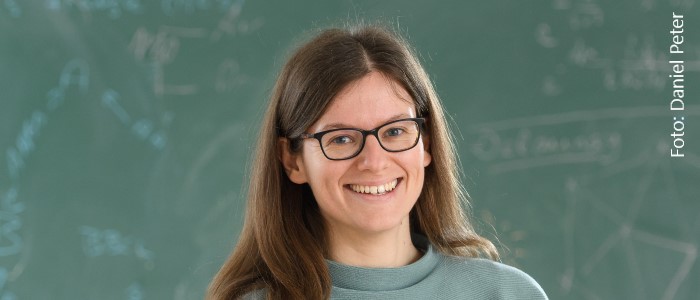Sabine Fischer

Center for Computational and Theoretical Biology (CCTB)
Campus Hubland Nord 32
Universität Würzburg
97074 Würzburg
Germany
Tel: 0931 - 31 83961
email: sabine.fischer@uni-wuerzburg.de
https://www.biozentrum.uni-wuerzburg.de/cctb/research/supramolecular-and-cellular-simulations/
Sabine Fischer
… is a mathematical biologist working on cell-cell interactions. After a Diploma in Mathematics from the University of Würzburg, she was looking for interesting questions to apply her Maths skills to and pursued a PhD in mathematical biology at the University of Nottingham, UK. Her thesis addressed mathematical models of Planar Cell Polarity in Drosophila melanogaster. Seeking closer interactions with biologists, Sabine Fischer moved to the Department of Genetics at the University of Cambridge, UK for a two-year postdoc on dorsal closure in Drosophila. For her second postdoc, she moved to the University of Frankfurt to be at the source of large amounts of quantitative data as input for her models. There, she also acquired her image analysis skills. An employment as development engineer at h.a.l.m. Elektronik GmbH in Frankfurt taught her the challenges that arise in industry. Since 2018, Sabine Fischer is a professor at the Center for Computational and Theoretical Biology (CCTB) at the University of Würzburg. Her group focuses on image-based mathematical modelling of intracellular, multicellular and tissue level processes.
Since 2018 Professor for Supramolecular and Cellular simulations, University of Würzburg
2017-2018 Development engineer, h.a.l.m. Elektronik GmbH, Frankfurt
2011-2017 Postdoc, University of Frankfurt
2009-2011 Postdoc, University of Cambridge, UK
2009 PhD in Mathematics, University of Nottingham, UK
Research synopsis
We work on data-driven modelling and simulations of processes at subcellular, multicellular, and multi-tissue scales. For the data analyses, we develop and apply tools that range from classical statistics to machine learning approaches. To test hypotheses about interactions of structure and function at the different scales, we use mathematical modelling and simulations. In particular, we use on- and off-lattice agent-based modelling in two and three spatial dimensions as well as three-dimensional morphological modelling with Blender.
In Project 7 of the SPP 2332 PoP, we focus on agent-based modelling of parasite collective behaviour.







